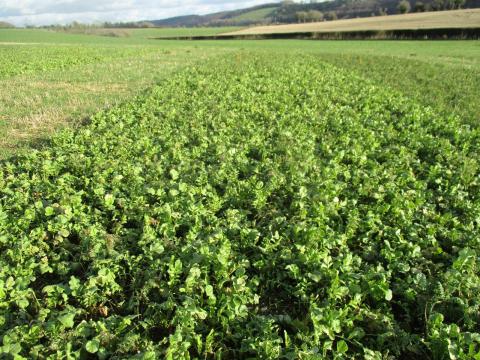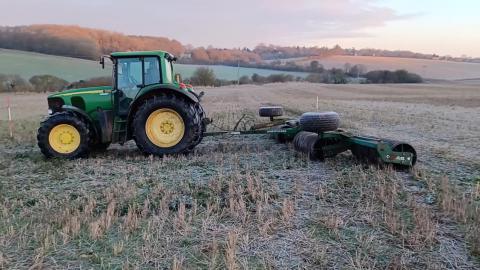Charlotte White & Anne Bhogal
Cover crops are grown primarily to ‘protect or improve’ soils between periods of regular crop production. They can reduce the risk of soil erosion, surface run-off and diffuse pollution by providing soil cover. Cover crops can also be effective at improving soil functioning by increasing soil nutrient and water retention, improving soil structure and quality, and managing weeds or soil-borne pests. For the benefits of cover crops to be fully realised, understanding what different cover crop species can achieve and how to manage them on different soil types and rotations is crucial.
To maximize the benefits, consider:
Species Choice: What do you want to achieve from the cover crop and how does it fit with your rotation? A mix of species can provide multiple benefits and reduces risk, but it can be more costly and potentially more complicated to manage (Figure 1). Potential species to include can be divided into four ‘types’: Legumes to enhance soil fertility, brassicas for nutrient uptake and soil structure, cereals providing rapid cover and nutrient uptake, and ‘others’ such as Phacelia and Buckwheat for nutrient scavenging abilities.

Establishment: Drill covers as early as possible, August rather than September, to ensure good crop cover and nutrient recovery. The highest N recovery tends to be associated with species that are either able to fix additional N (e.g., clovers or vetches) or establish good above and/or below ground biomass early in the season (e.g., radish, phacelia & cereals).
Destruction: Leave a good window of time between destruction and spring crop establishment, particularly on heavy textured soils in wet springs. Covers are most commonly destroyed chemically, but other non-chemical methods are being explored such as mechanical destruction by flailing, crimping or rolling on a frost (Figure 2). Grazing with sheep is also an option which can provide an additional source of income.

Long term investment: Be prepared for variable impacts on yields and the need for repeated years of cover cropping to release benefits over the longer term.
Latest ADAS Research on cover crops:
• Nitrate leaching after Vining peas: Establishing a catch crop after vining peas and direct drilling into this, i.e., companion cropping, was found to significantly reduce nitrate leaching losses compared to either no catch crop or destroying the catch crop prior to drilling. The companion crop had no detrimental effect on crop yield. This project is continuing into a second year to look at the legacy effects of the catch and companion crops on nitrate leaching and wheat harvest. Project funded by Anglian water with seed mix supplied by Kings Crops and biomass analysis carried out by Frontier.
• Nitrogen release from Cover crops project (NiCCs): At two sites (Hertfordshire & West Sussex) two cover crop mixes were found to reduce over winter nitrate leaching losses by c. 90% and 70% compared to a weedy stubble control. The spring soil nitrogen supply was up to 60 kg/ha greater where a cover crop had been grown. The fate of the nitrogen retained in the cover crops is the focus of ongoing work. Project funded by Affinity Water and Portsmouth Water and seed mixes supplied by RAGT seeds UK.
Further information:
Watch the ADAS Webinar on Cover crops: https://www.youtube.com/watch?v=Xhmt_WqiszY
The AHDB Maxi cover crop report PR620: PR620 (https://ahdb.org.uk/maximising-the-benefits-from-cover-crops-through-species-selection-and-crop-management-maxi-cover-crop)
| ACTION - Consider the requirements from a cover crop |
